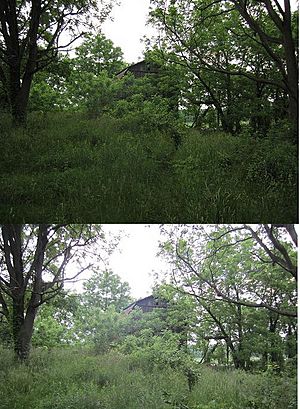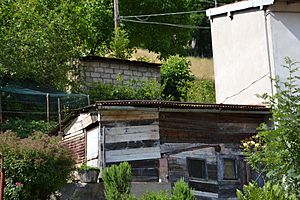Exposure (photography) facts for kids
In photography, exposure is how much light reaches your camera's film or sensor. It's super important because it decides how bright or dark your photo will be. An exposure can also mean the photo itself, after it has been taken.
Contents
What is Underexposure and Overexposure?
When you take a photo, you want the right amount of light. If there's too much or too little, your picture might not look its best.
Too Much Light: Overexposure
A photo is overexposed when it gets too much light. This makes the bright parts of the image look "washed out" or completely white. Imagine a bright sky in a photo that just looks like a big white blob. This is called "blown-out highlights."
Too Little Light: Underexposure
A photo is underexposed when it doesn't get enough light. This makes the dark parts of the image look "muddy" or completely black. You might not be able to see details in shadows. This is called "blocked-up shadows."
Cameras have different ways to help you get the right exposure. These include manual, automatic, and exposure compensation settings.
How Cameras Control Exposure
Cameras offer different ways to control how much light hits the sensor. This helps photographers get the perfect shot.
Manual Exposure: You're in Charge!
In manual mode, you, the photographer, control everything. You adjust two main things:
- Aperture: This is like the pupil of your eye. It's an opening in the lens that lets light in. A wider aperture lets in more light.
- Shutter Speed: This is how long the camera's shutter stays open. A slower shutter speed means the shutter stays open longer, letting in more light.
Changing these settings also affects other things. A wider aperture lets in more light but makes less of the photo in focus (this is called depth of field). A slower shutter speed lets in more light but can make moving objects look blurry (this is called motion blur).
Automatic Exposure: Let the Camera Decide
Most cameras have an automatic exposure (AE) mode. In this mode, the camera uses a built-in light meter to figure out the best settings. It tries to make sure the main subject in your photo looks just right.
There are also special automatic modes:
- Aperture Priority (Av): You choose the aperture, and the camera automatically picks the right shutter speed.
- Shutter Priority (Tv): You choose the shutter speed, and the camera automatically picks the right aperture.
In both these modes, the camera's light meter still decides the overall exposure level.
Exposure Compensation: Fine-Tuning Your Photo
Sometimes, the camera's automatic settings might not be perfect. For example, if you're taking a picture of a snowy scene, the camera might think it's too bright and make the snow look gray.
This is where exposure compensation comes in. It lets you tell the camera to make the photo a little brighter or darker than what it thinks is right. You can usually adjust it in "stops" or "EV units."
- A "+1" setting means the photo will be twice as bright.
- A "–1" setting means the photo will be half as bright.
Exposure compensation is very helpful when you want to make small changes to an automatically exposed photo without switching to full manual mode.
Images for kids
-
A long exposure showing star trails around the south and north celestial poles, viewed from Paranal Observatory. (Credit: ESO)
-
A photograph of the sea after sunset with an exposure time of 15 seconds. The swell from the waves appears foggy.
-
A 1/30 second exposure showing motion blur on a fountain at Royal Botanic Gardens, Kew.
-
A 1/320 second exposure showing individual drops on a fountain at Royal Botanic Gardens, Kew.
See also
 In Spanish: Exposición (fotografía) para niños
In Spanish: Exposición (fotografía) para niños












